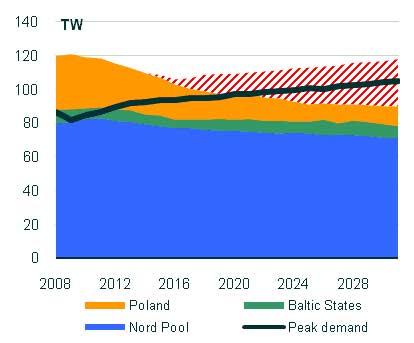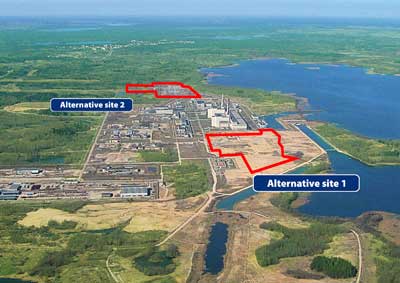
European
Nuclear Society
e-news
Issue 27 Winter 2010
http://www.euronuclear.org/e-news/e-news-27/visaginas.htm

The new Visaginas NPP project continues to progress on schedule. The project’s development company, Visagino Atominė Elektrinė (www.vae.lt), VAE, is carrying out the preparatory work that is necessary in order to properly prepare for the construction of the new NPP. Some of the preparatory work, like the Environmental Impact Assessment, the Environmental Due Diligence of Construction Sites study, the Radioactive Waste Management Strategy document, a detailed plan of the land plots required for construction, etc. has already been completed. Other projects, like the assessment of construction sites against IAEA safety requirements, the transportation study etc., are at a very advanced stage and will be finalised in 2010.
To enable the construction of the new NPP it was recognized that Lithuania needs to attract investors capable of providing finance, the required nuclear operational expertise and considerable construction project management experience. For the purpose of attracting investors, an international advisory consortium, led by the investment bank N M Rothschild & Sons, was asked to prepare a business model and financing plan for the new Visaginas NPP project in Lithuania. This was presented in September 2009 and adopted by Lithuania.
The power market analysis performed by NERA set out to establish whether the potential evolution of the regional energy supply and demand scenario, the relative economic merits of different generation technologies and the projected forecast for long-term power prices based on a number of assumed scenarios are likely to create an environment that provides an incentive for commercial investment into new generation capacity. According to the findings of that analysis, when the existing power plants are shut down the entire Baltic region will encounter electricity supply shortages as of 2016. Existing and planned investments in power plants will not be able to meet the increased electricity demand. As such, in order to ensure a reliable electricity supply for the Baltic region and to reduce its dependence upon energy imports it is necessary and economically rational to invest in new generation capacity in the Baltic region and, in particular, in new nuclear generation. Additional renewable capacity will not provide the base load power supply required for the region, and additional fossil-fuel capacity will not allow Lithuania or the region to either enhance their security of supply situation or meet their green agenda. Nuclear investment allows Lithuania and the region to secure their energy supply and meet their commitments to low-carbon electricity generation.

Picture 1. Interconnected projected region supply and demand
At the beginning of December 2009, Lithuania announced a call for investment in the new Visaginas NPP project. The purpose of this tender is to attract financially strong investors who have experience in the nuclear energy sector. The negotiations with regional partners (national utilities in neighbouring countries) and strategic Investors, as well as the signing of agreements with them for the further development of the new NPP project, will be finalised in 2010. The development timetable for the project aims to have the new NPP built in time to start generating electricity between 2018 and 2020.
There are two alternative construction sites that have been selected for the new NPP and both of them have been assessed against IAEA safety requirements. In addition, an environmental audit of both sites has been performed. The completion of the assessment of geotechnical and seismic factors at each of the construction sites is expected in 2010.

Picture 2. Alternative sites for the new Visaginas NPP.
Since the new NPP will be built near to the recently closed-down Ignalina NPP, some infrastructure from Ignalina NPP will be used by the new NPP, which will help to cut costs. The lake of Druksiai, which until recently had been cooling Ignalina NPP, will also be used for cooling of the new NPP. Comprehensive measurements of water temperature and meteorological conditions of the lake have been performed. Conclusions drawn from the analysis of the collected data will be needed to help with the selection of an optimum cooling system for the new power plant.
After thorough technical and market analysis, and a financial assessment of the project carried out by the advisory consortium in accordance with defined assumptions and scenarios, the development of a new NPP in Lithuania was considered to be commercially and economically viable. Based on a supportive regulatory and investment framework, such as the one that Lithuania is seeking to create, the new Visaginas NPP represents an attractive investment opportunity. The Visaginas NPP will also significantly enhance Lithuania’s and the region’s energy security and will contribute to the implementation of Lithuania’s National Energy Strategy.
By Giedré Krinicina, Visagino Atominė Elektrinė
© European Nuclear Society, 2010